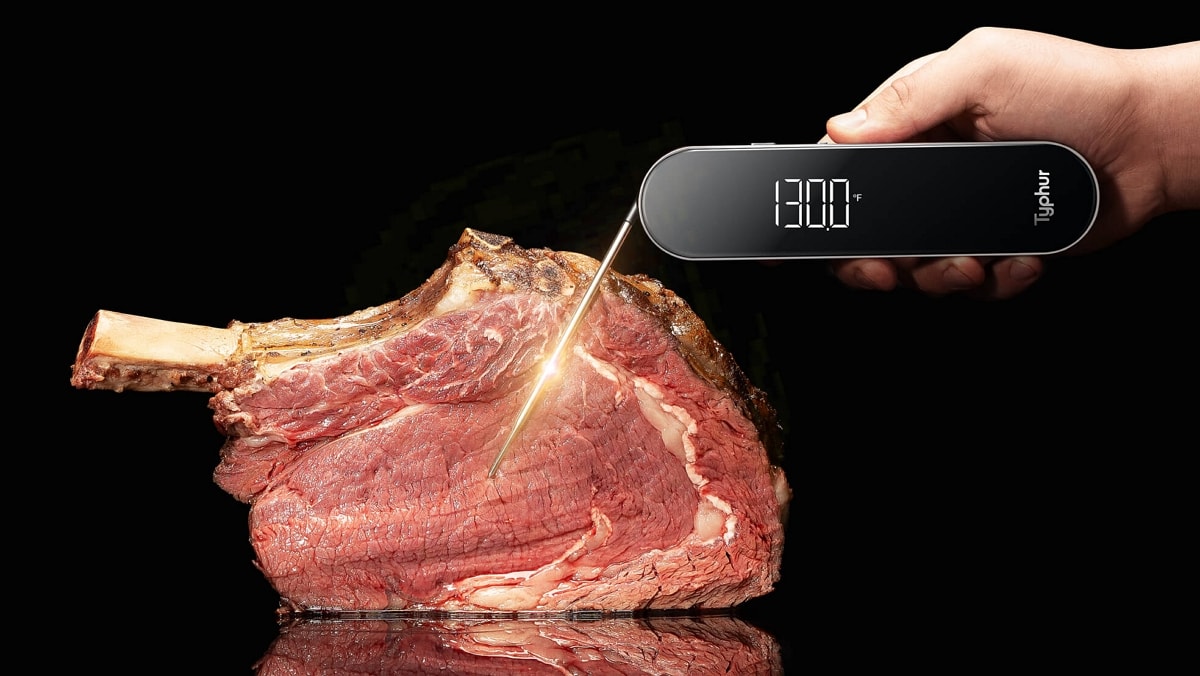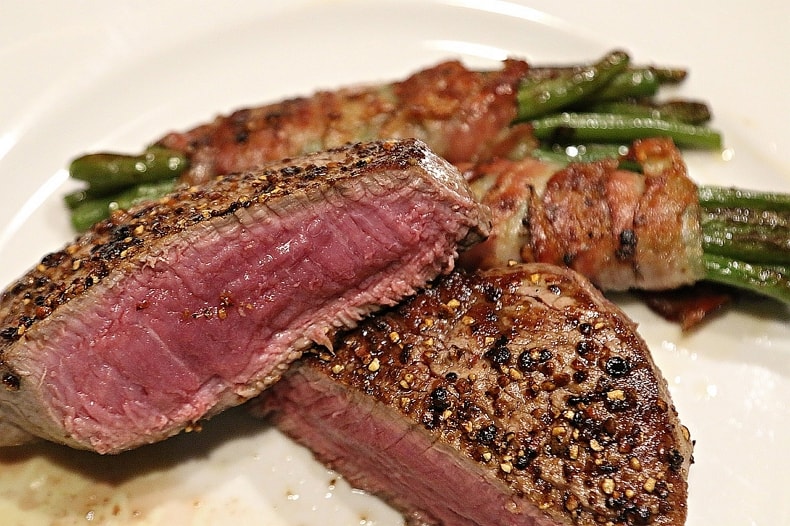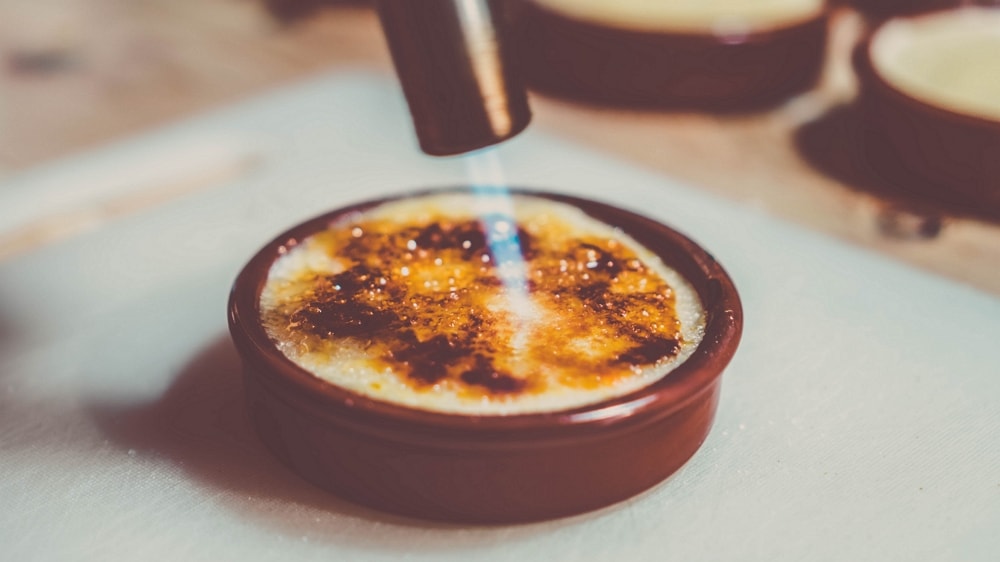Why is chicken still pink after cooking? Don’t worry: color does not indicate chicken doneness; temperature does!
Cooking the chicken to the right temperature is key to getting that juicy, mouth-watering result. But what should you do when, upon slicing into the meat, you find the meat or juices still pink and look bloody?
The culinary world accepts red and pink in steaks, as beef is safe to eat at various levels of doneness. Chicken, however, is a different story.
Why Cooked Chicken Can Still Be Pink
Cooked chicken can still exhibit a pink hue for several reasons, even when it’s fully cooked:
Age of the Chicken
The chickens we commonly buy for cooking are typically young, around 6 to 8 weeks old. At this age, their bones haven’t fully hardened and are more porous. The bone marrow, which has a purplish color, can seep through these soft bones and into the meat, especially during cooking. This can give the meat near the bones a pink or even reddish hue.
Myoglobin Content
Myoglobin is a protein that stores oxygen in muscle cells. The amount of myoglobin in a chicken’s muscle determines the color of the meat. Chicken legs and thighs are more actively used by the bird, so they have higher myoglobin content and tend to be darker. When cooked, this myoglobin can retain a pink color, especially in these darker parts.
pH Levels of the Meat
The meat’s acidity or pH level can also affect its color. Meat with a higher pH (lower acidity) can retain a pink color even after being cooked. This is why some cooking techniques involve using acidic marinades to help reduce the pink appearance, but these may not always counteract the natural pigmentation caused by myoglobin and marrow.
Cooking Method
Certain cooking methods can influence the color as well. For example, smoking meat can lead to a pinkish hue due to the chemical reactions between the smoke and the meat.
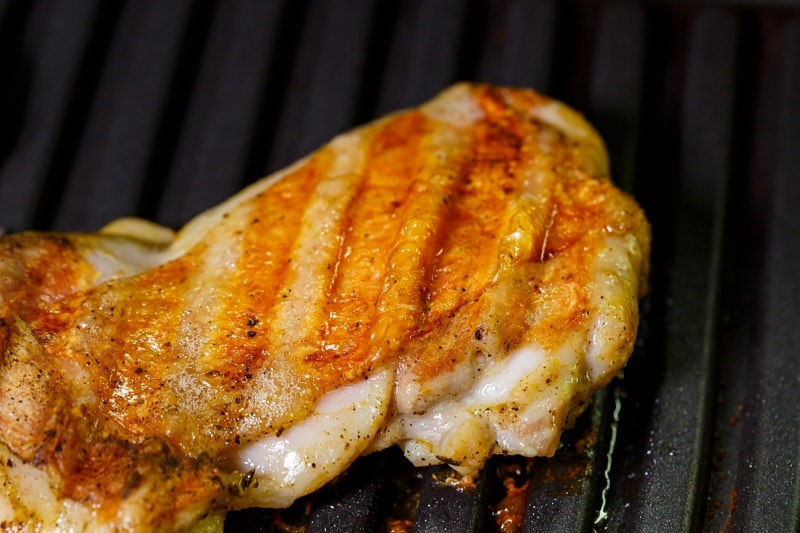
Why is My Chicken Bloody In the First Place?
Contrary to popular belief, the “bloody” appearance in cooked chicken isn’t blood at all. Most blood is removed during the slaughtering process. The pink tinge often mistaken for blood is primarily due to myoglobin and water – aptly named ‘myowater’ – mixed in the muscle tissue.
The age of the chicken and the temperature fluctuations during cooking can cause this pinkish color. Freezing can exacerbate this effect, as ice crystals can rupture cells and mix myoglobin more thoroughly through the meat, leading to a pinker appearance post-cooking.
All that Matters is the Temperature, not Color
Remember, the color of the chicken isn’t a reliable indicator of its doneness. The best way to ensure chicken is cooked safely is by using a meat thermometer to check its internal temperature.
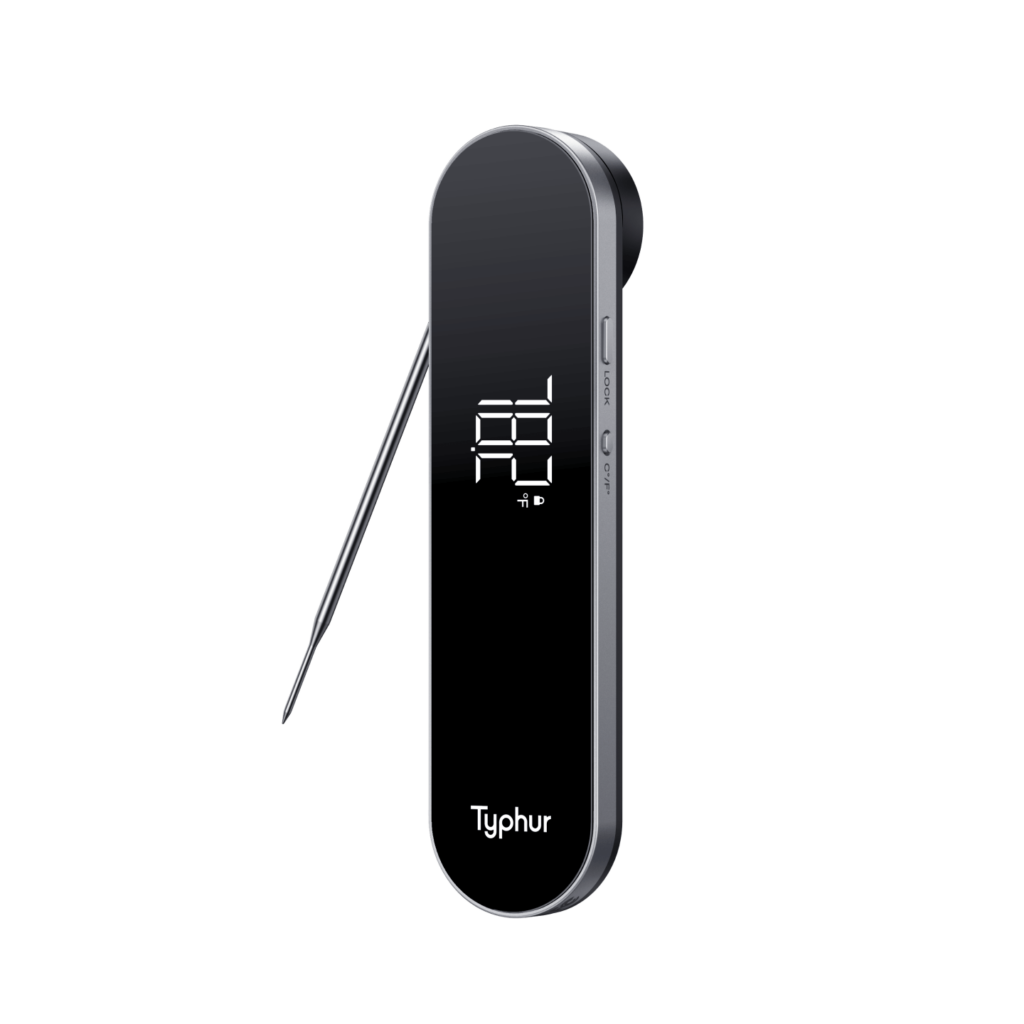
Instant Read Meat Thermometer
The USDA says that chicken is safe to eat as long as all parts of the chicken have a minimum internal temperature of 165°F. A note on temperature: Reducing bacterial risk involves more than just hitting a certain temperature. Factors like moisture and fat content play a role, as J Kenji López-Alt outlines in The Food Lab. The combination of temperature and duration can indicate when chicken is safe for consumption.
For example, chicken held at 157°F for about 60 seconds can achieve a significant bacterial reduction. Choose the approach that suits your comfort level, whether it’s this temperature-time matrix or the straightforward USDA guidelines.
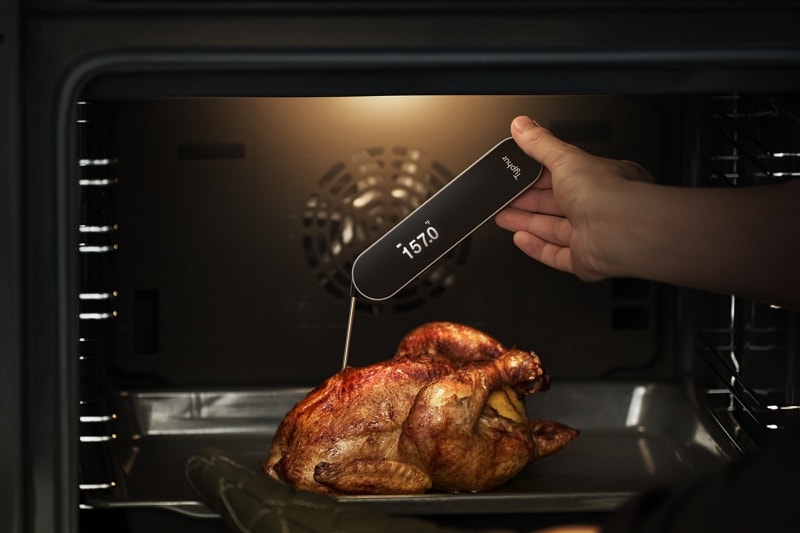
For your interest: You might need to read our chicken temperature guide.
Conclusion
In summary, the sight of bloody pink hues in your cooked chicken need not be a cause for alarm. As we’ve explored in this comprehensive guide, the key to poultry perfection lies in understanding and achieving the right internal temperature, rather than relying solely on color as a gauge of doneness.
By using Typhur InstaProbe instant-read meat thermometer and aiming for that crucial 165°F (74°C) mark, you can relish the safety and succulence of your chicken dishes.
So, the next time you encounter a pinkish tone in your cooked chicken, remember – it’s not just about how it looks, but how well it’s cooked. Eat confidently, knowing that safe and delicious chicken is at your fingertips, pink or not!

